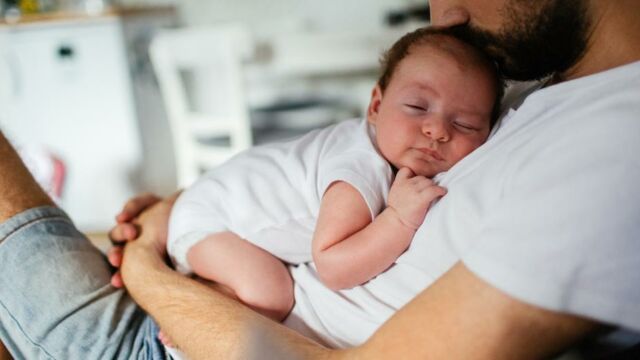Here’s How To Sleep Like A Baby

For lots of people, it’s not always easy to get a good night’s sleep! According to a recently published study carried out by Swiss researchers, gently being rocked back and forth, similar to how a baby’s cradle moves, could help you fall asleep, improve the quality of your sleep and even your memory consolidation. So why shouldn’t we be taking advantage of this as well?
In the UK, most adults suffer from sleep-related problems and apparently, around 30% of people are severely sleep-deprived. But now there is a bit of good news. According to a study recently published in the Current Biology journal, being gently rocked for side to side while you sleep could also have several advantages for adults. These benefits include finding it easier to fall asleep quickly, allowing you to sleep for longer and deeper and could even help your brain to store memories easier. Find out how below!
Discover our latest podcast
Rocking also works for adults
This two-night-long study was conducted by a team of researchers from the University of Geneva and involved analysing the sleep activity of 18 people (ten women and eight men) between the ages of 20 and 27 who didn’t have sleep disorders. On the first night, the volunteers slept in a static bed and on the second night, a kind of rocking bed that moved at a frequency of 0.25 Hertz and sways from side to side with a 10.5 cm lateral excursion all night. This rocking cycle lasted for four seconds, so there was no risk of feeling seasick.
More under this adMore under this adThroughout the study, scientists also recorded the participants’ brain activity, heart rhythm, eye movements and other sleep data.
Improved quality of sleep and memory performance
As quoted on CBS, Laurence Bayer, the lead author of the study and a biologist at the University of Geneva, states that ‘a good night’s sleep means falling asleep quickly and staying asleep all night.’
More under this adMore under this adShe observed that those who slept in this rocking bed took less time to reach non-REM sleep, which correlates with improved sleep quality. In the static beds, the participants needed an average of 6.5 minutes longer to enter this deep sleep phase and once they did, they were in this phase for an average of 5% less time.

Other positive effects
But that’s not all. The vibrations caused by this rocking bed were also found to have a positive effect on the volunteers’ memories. The eighteen subjects were given a list of 46 word pairs to memorise the evening before, and the results showed that those who slept in these slightly rocking beds remembered these word pairs easier and better. As Scientific American explains:
‘Rocking also was found to synchronise brain waves during non-REM sleep in the thalamocortical networks of the brain, a system known to be involved in both sleep and memory consolidation, the nocturnal process during which the brain processes and stores long-term memories.’
More under this adMore under this adAurore Perrault, co-author of the study who, at the time, was a researcher at the University of Geneva, but who currently works as a researcher in the field of neurosciences at the Concordia University in Montreal (Canada), also confirms that some of the subjects were sceptical about the study at first. However, others were intrigued by the idea of this rocking motion and found it ‘pleasant and relaxing’. Some of the participants even said that they ‘fell in love’ with the cradle beds and wanted to take one home with them straight away!